Best plants for fence line: 13 ways to add interest to backyard boundaries
Our edit of the best plants for fence line will transform boring backyard fences into an attractive feature

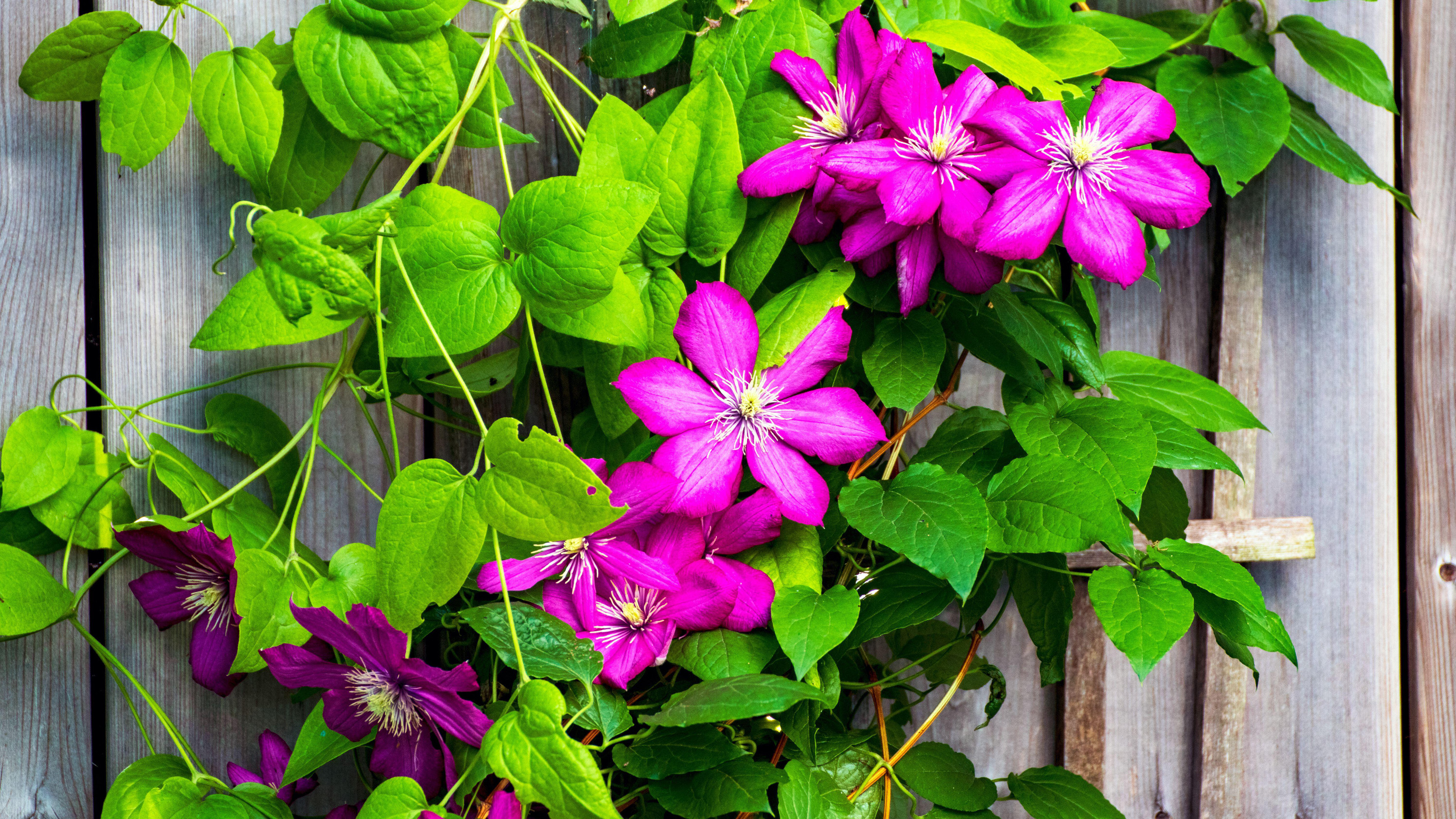
Choosing the best plants for fence lines can make fences much more than a purely functional feature. Plants will soften or camouflage an ugly fence and planting against them can add a sense of visual cohesion to a garden. But more than that, landscaping along the fence line can bring a whole new dimension to an outdoor area because it uses the vertical space.
Plants positioned close to any fence line may need extra care and attention, as the shadow of a vertical structure can prevent rain from reaching the roots. To avoid dry conditions, dig in some well-rotted manure at least once a year, and keep the plants well-watered.
The kind of garden fence ideas you have in your plot dictates the plants you can choose to an extent. Solid wooden fence panels will need shrubs trained against them rather than climbers, as they do not have anything for the plants to cling to unless you add trellis or wires. Larger decorative garden trellis panels can be used for defining boundaries and they are ideal for climbers to attach themselves to.
If you have an attractive contemporary style or rustic fence and would like to draw attention to it, a line of semi-transparent grasses or perennials might be the answer. In smaller gardens where space is an issue, narrow growing plants which hug the fence line and are easily contained are a good choice.
Best plants for fence line: 13 ways to pep up garden boundaries
Whether you're looking for climbing plants, shrubs or perennials, our edit of the best plants for fence line offers something for every size and style of backyard.
Climbing plants for fence lines
Shannen Godwin from J Parker’s, a leading plant and bulb companies, says: 'Climbers are ideal plants to have around the fence line as they can give the garden an instant makeover and add a much-needed dose of color. Growing to a wide range of heights, depending on variety, they can be pruned to suit most requirements. Choose from an evergreen variety for permanent foliage or a flowering variety if you want something a little different.'
1. Clematis
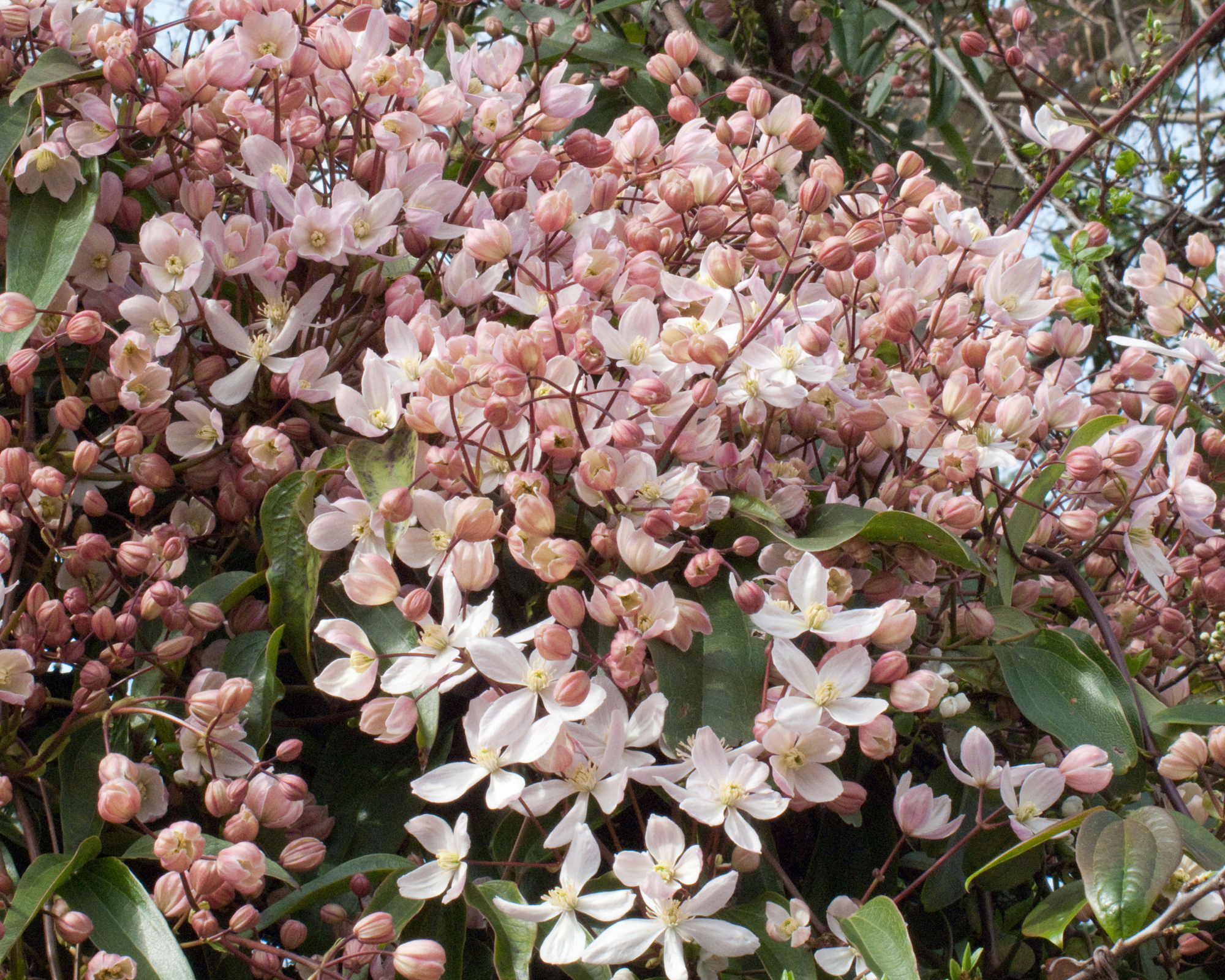
If you're interested in learning how to grow clematis, you'll know that these climbers will happily grow over a fence, but their tendrils need a trellis or a wire to cling to.
Clematis fall into three main groups, early flowering, early to mid-season flowering and late flowering. Try an evergreen clematis: when the flowers have gone, the foliage remains, and it will not need pruning.
Pretty white ones include clematis armandii ‘Appleblossom’ and cartmanii ‘Avalanche’ which has thick clusters of luminous white flowers.
Not only are clematis one of the best climbing plants, they are also ideal for the fence line, as their roots like shade, while the stems and top growth enjoy growing up towards the sun.
2. Ivy
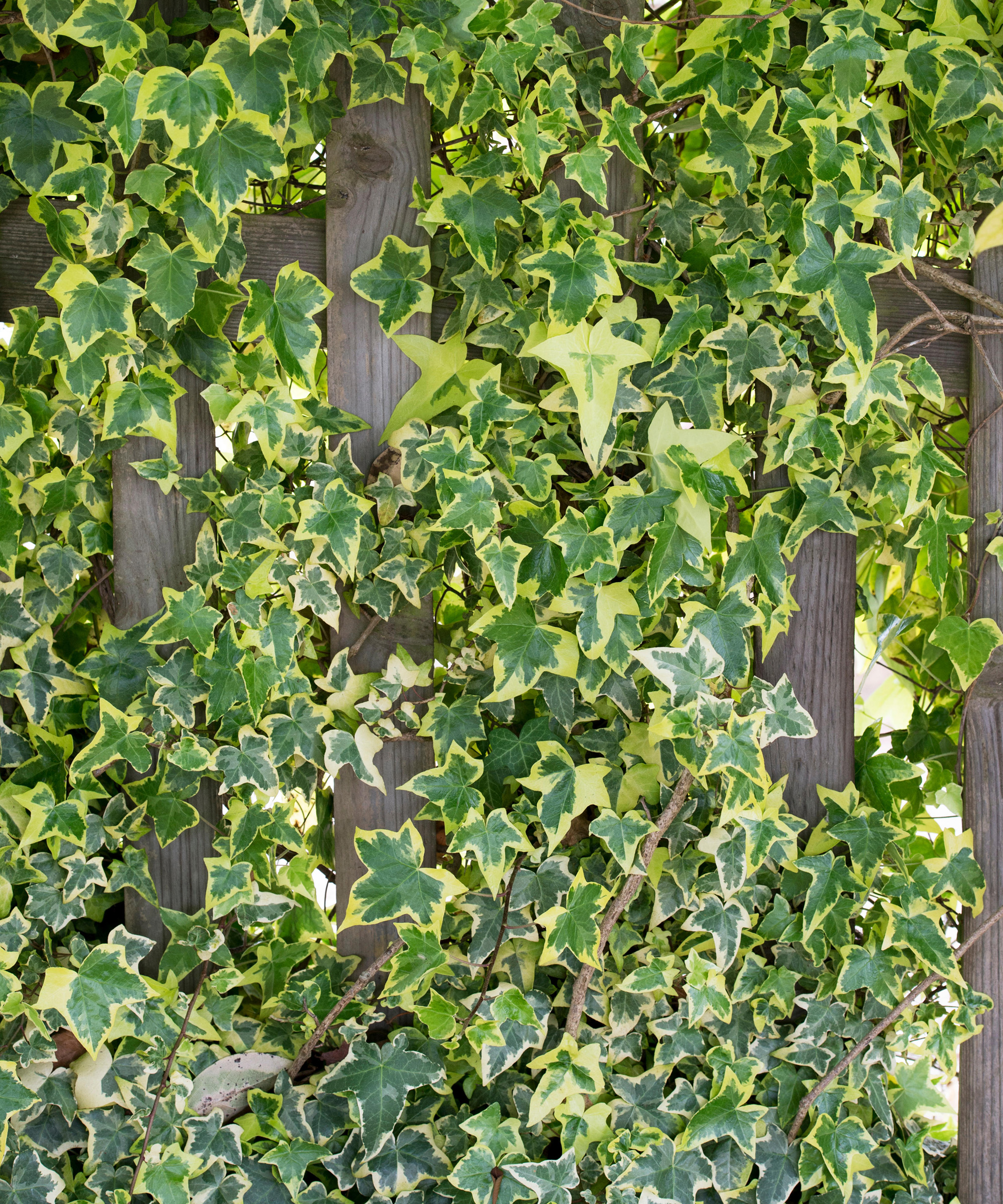
There are few places where ivy cannot grow. It has aerial roots which means that it does not need supports to climb up a fence. It has both flowers and berries for winter interest, and it will form a wall of foliage, making it an ideal option if you're searching for effective privacy fence ideas.
It can be invasive, but it is straightforward to chop it back, keeping it tidy and close to the fence line. Be sure to choose an ivy that is a climber, not a creeper. Try ‘Sulphur Heart’ for variegated foliage which will create an interesting backdrop for the rest of the plants in your garden.
3. Honeysuckle

Flowering from early summer to the autumn, the tubular blooms are succeeded by shiny red berries, so there’s always something of interest to see. They have slim, flexible stems which twine, so they will need some supports on the fence.
'This is an easy-to-grow, effective climber that makes a great addition to any landscape,' says Shannen Godwin of J.Parker’s. To stop honeysuckle from swamping your fence, cut back the flowered stems by a third in late summer, and then tidy them again in late winter.
Try Lonicera japonica ‘Darts Wall.’ It’s a semi evergreen plant, so it will only lose some of its leaves in winter. It’s also sweetly scented and it flowers from late spring to autumn. Mix honeysuckle on the fence line with a climbing rose for a gorgeous abundant cottage garden feel. Some varieties of honeysuckle are deciduous, so check before purchasing to ensure guaranteed winter cover.
There's plenty more expert tips on how to grow honeysuckle in our dedicated guide.
4. Morning Glory
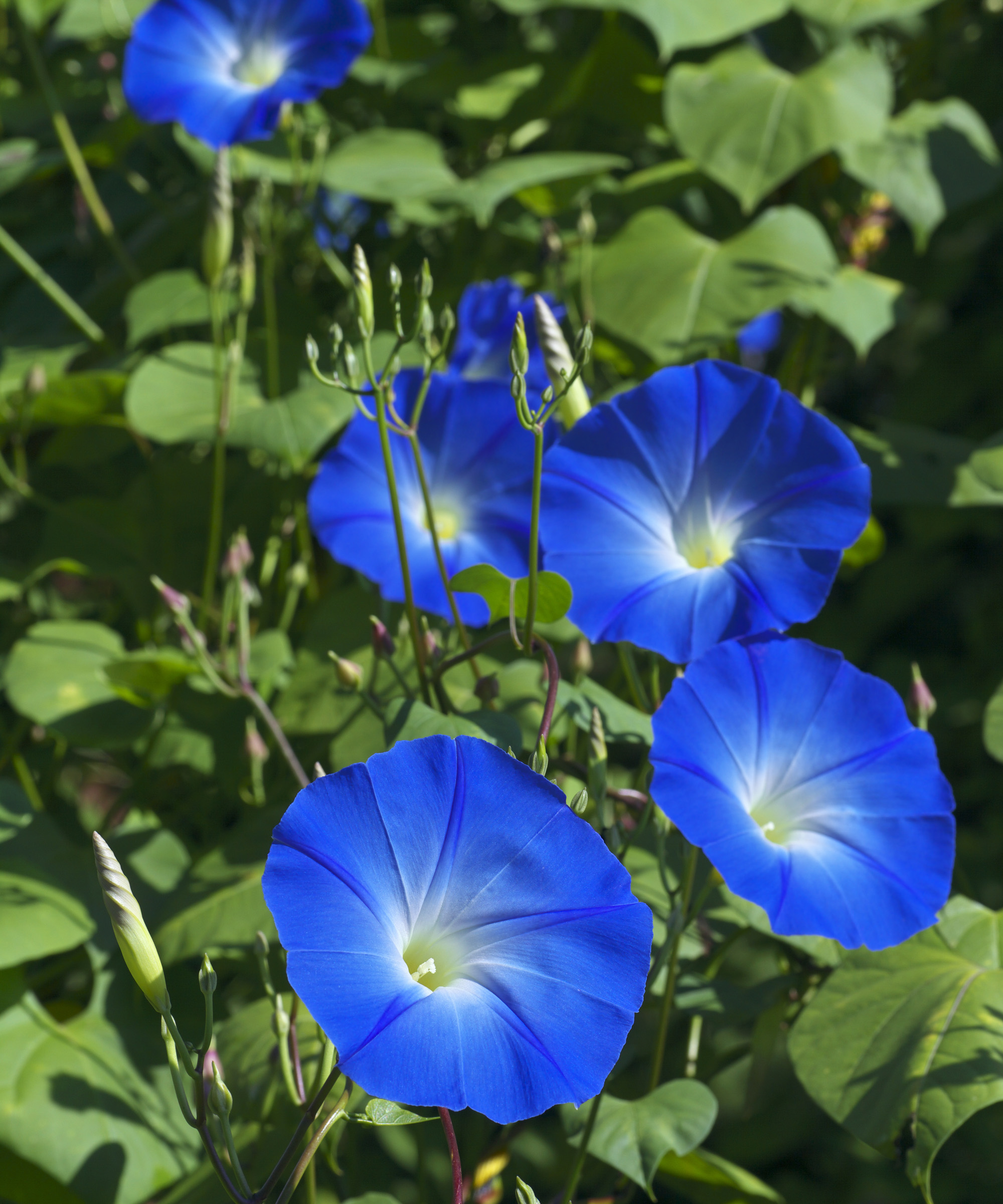
If you're looking for the best fast growing hedges for fence line coverage, this twining plant is an attractive pick. It has heart-shaped leaves and clear blue flowers from summer to early autumn. The blooms open in the morning and close in the afternoon.
It grows up to 10ft (3m) in one season, and it needs full sun. It is a perennial plant when it is grown in warm and tropical climates. There’s no need to prune, but to stop it from becoming invasive, remove the seed pods to stop it spreading into your neighbor’s yard.
5. Climbing roses

Turn a plain fence line into a vertical backdrop of color and charm with one of the best climbing roses.
Rosa banksiae ‘Lutea’ is a good choice, as it’s a fast growing, thornless climber with clusters of small, golden yellow flowers, which come once a year. It will grow up to 30ft (10m) if left to its own devices. For a fence line in a large garden, try ‘Rambling Rector’ with scented, creamy flowers.
Climbing roses do need sturdy wooden or wire trellis attached to a fence to train their growth. Use twine or garden ties to secure the shoots at intervals of about 20in (50cm).
Shrub plants for fence line
Shrubs are some of the best plants for fence line screening. You can either cover a fence with a shrub, to create a defined boundary or a green backdrop to the rest of the garden, or choose a lower-lying variety to make a feature of it. These shrubs will not need wires or ties.
1. Lilly pilly

This shrub (also spelt lilli pilli), sometimes known as Australian cherry, will hug a fence line, providing a dense, low-maintenance screen with dark green foliage edged with pink tips. It’s an evergreen so it will provide year-round coverage and grows in almost any soil in sun or part shade.
It’s native to Australia and is perfectly suited to Mediterranean-style climates, and some regions of the USA. Most varieties have creamy flowers in summer and pink fruits in the autumn. It’s easy to care for. Keep it evenly trimmed, and it will offer a harmonious and never-boring backdrop to the rest of the garden.
There's more options for the best low maintenance shrubs in our expert guide.
2. Hydrangea
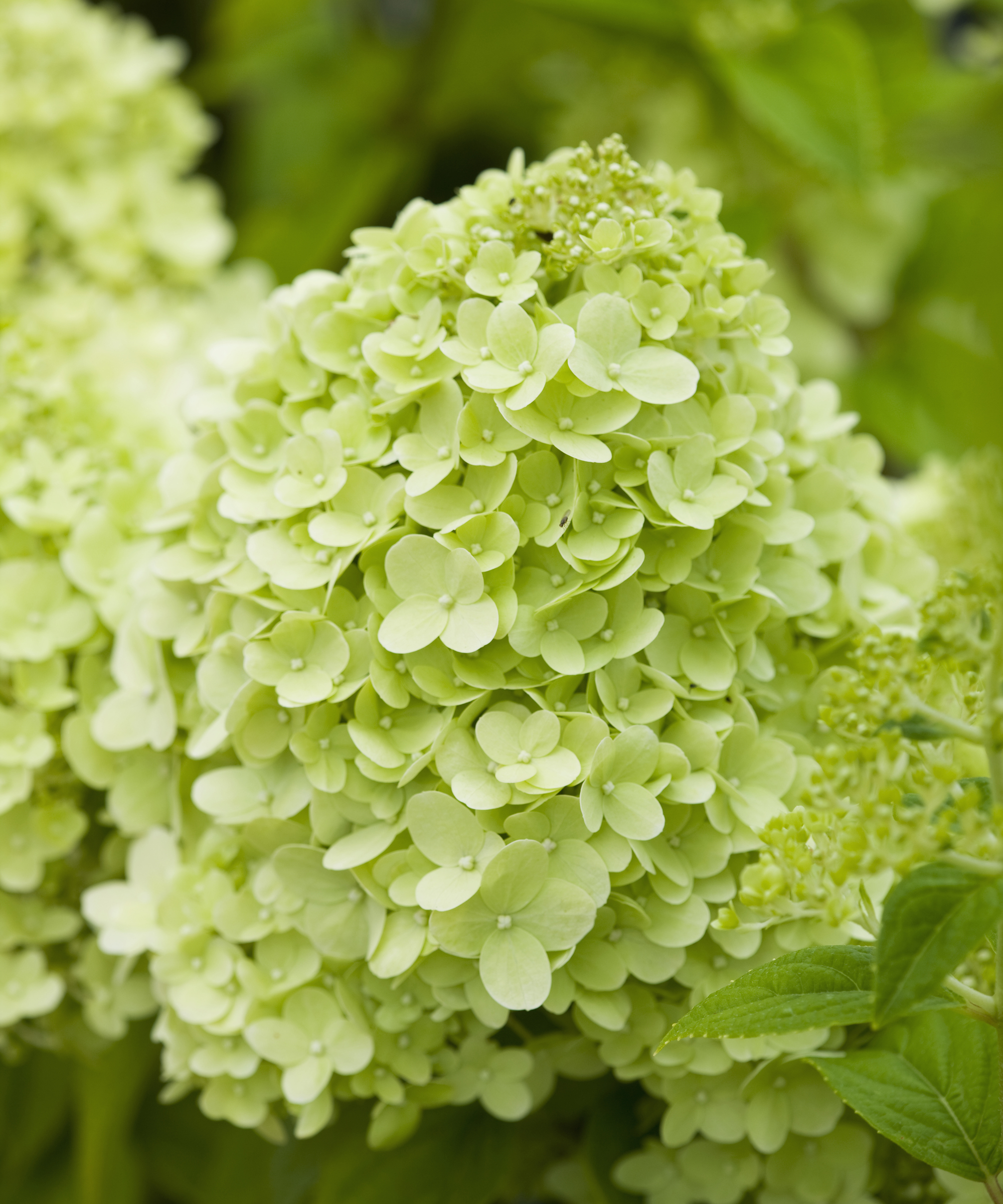
If you want a truly stylish fence line shrub, make learning how to grow hydrangeas a priority. With their generous pom pom heads and strong leaf shape, they will draw attention to a pretty painted fence rather than covering it up.
Hydrangeas like moist soil and should not be allowed to dry out. Mulch in spring or autumn for an extra moisture boost.
Hydrangea paniculata is a gorgeous lime green deciduous variety which turns cream, then pale pink. ‘Preziosa’ offers generous mophead flowers which are pink, transforming to blue/mauve.
Generally, acidic soils produce blue flowers and neutral ones make them pink. Our guide to soil types explains how to work out what sort of soil you have in your plot.
3. Cherry laurel
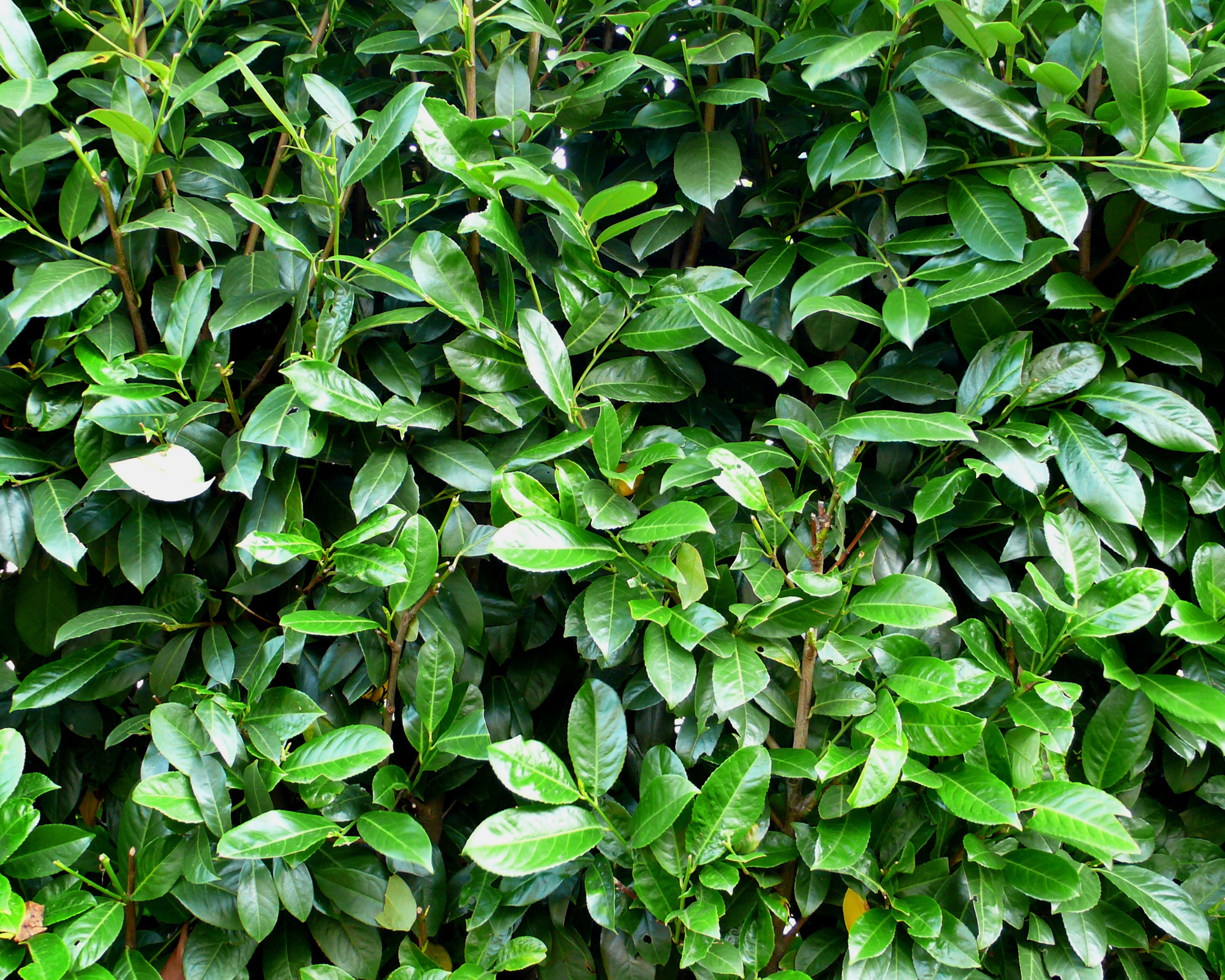
For dense garden screening ideas to hide a fence and create a neutral backdrop for the rest of the backyard, cherry laurel is a top choice.
It may not be the most exciting plant, but it is reliable, easy to care for and will thrive in full sun or shady areas. All it needs is a trim once a year, in late winter or early spring (twice a year if you prefer a very manicured look). It grows 12-24in (30-60cm) a year, and the final height is 16ft (5m), but it can be trimmed back as hard as you like.
There's more options for the best screening plants in our dedicated guide.
4. Photinia

Try a photinia ‘Red Robin’ for covering an unappealing fence, while adding more than just plain foliage. It is an evergreen, but new growth produces vibrant red leaves adding a real punch to the fence line.
It prefers a sheltered spot in sun or partial shade and moist well-drained soil of any type. Trim back to keep it lean in spring or summer, but do not cut after mid-August as this could make it vulnerable to frosts.
If you love the red tinge, remove the tips of the young shoots to ensure that it continues as bright as possible. The ultimate height is 13ft (4m), but it can be easily contained.
Perennial plants for fence line
A fringe of foliage can make a fence line stand out, so if you want to emphasize an elegant curve, or highlight a stylish structure, perennials can be the perfect choice. Here's which ones made our best plants for fence line list.
1. Verbena bonariensis

Few plants are so elegant and yet simple care for. With small purple flowers on a lattice of skinny stems, verbena bonariensis add a stylish, see-through screen. These plants grow upwards, not outwards, so they are ideal for highlighting a fence line in the narrowest of garden borders.
Grow from seed or from young plants. Either way, they will top 6ft (1.8m) in a season. Leave them uncut over winter, even though they die off, as they will provide an attractive, frosted structure and a source of seeds for finches. The plants will appreciate a mulch in the autumn.
2. Stipa tenuissima
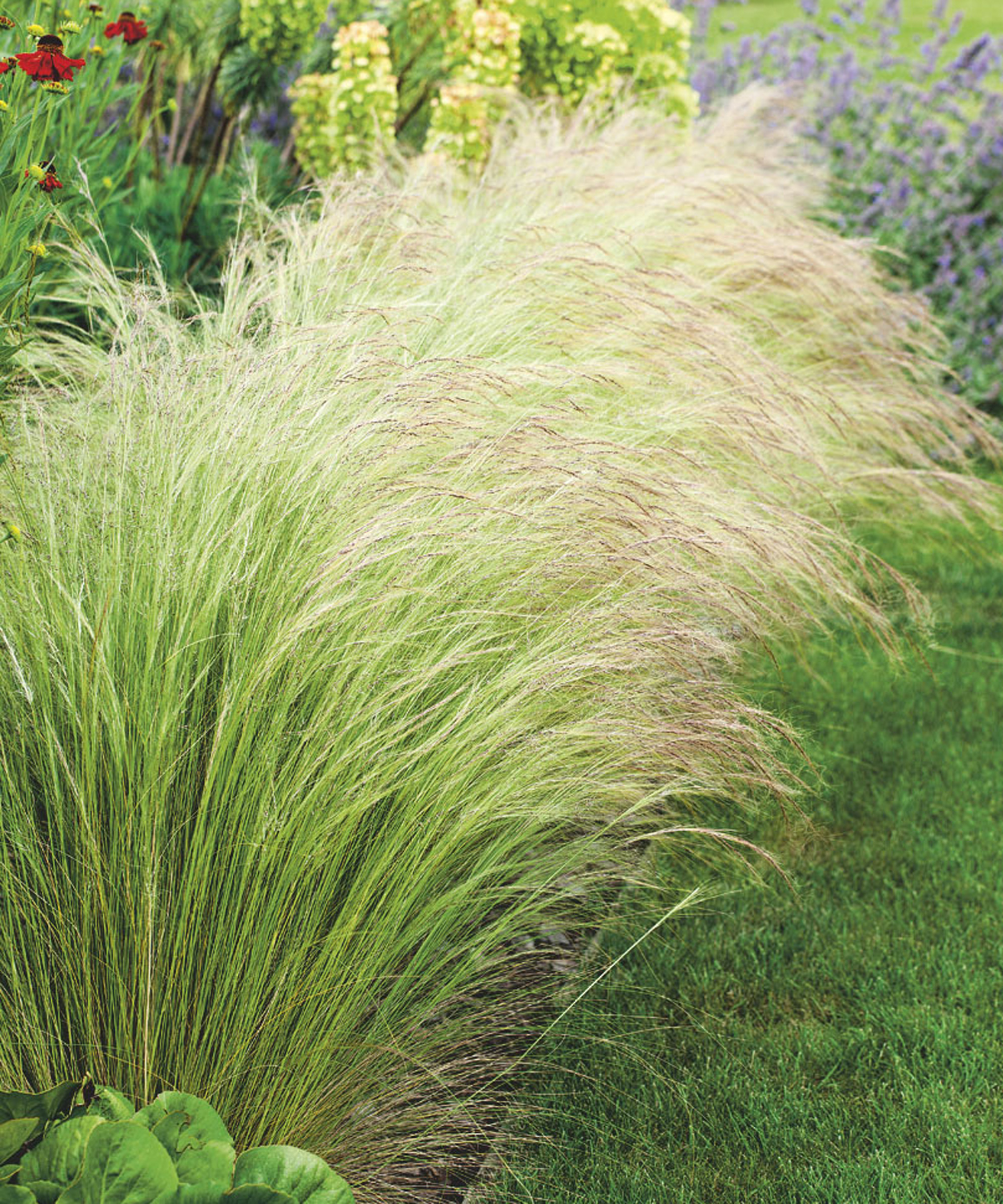
They might not be your first thought as being the best plants for fence line, but ornamental grasses can be effective screening options.
Also known as Mexican feather grass, or pony tails, Stipa tenuissima adds a textural fringe to the fence line, with fluffy panicles of silvery gold flowers on upright, fine stems.
It won’t overwhelm, as it only grows to about 24in (60cm) tall and 16in (40cm) wide. Easy to care for, it prefers a sunny position in any type of soil. It can be cut back to the ground in spring for fresh growth.
3. Libertia chilensis
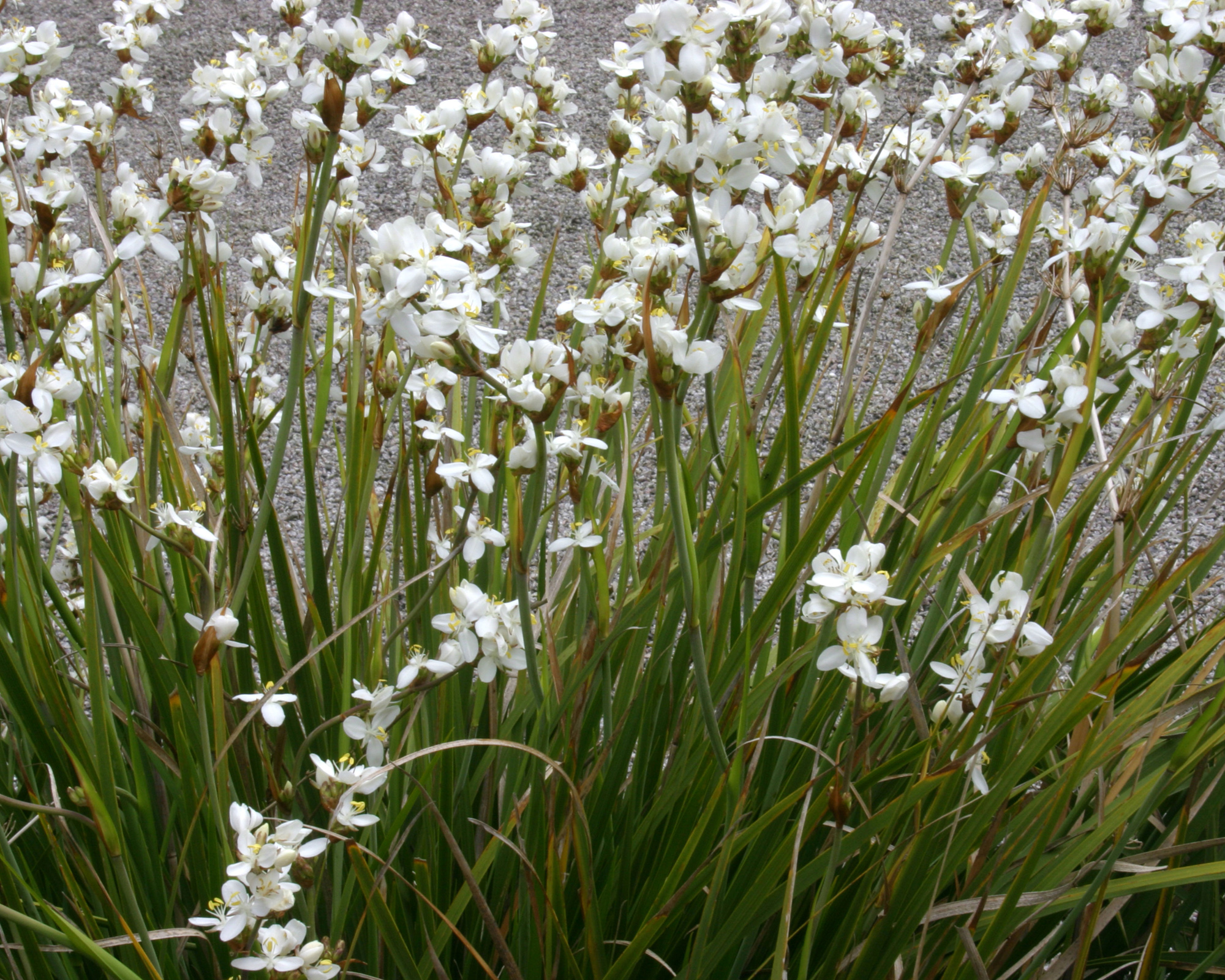
This elegant, slimline evergreen perennial, also known as a Chilean satin flower, has clumps of narrow, upright leaves and stiff stems of pure white daisy like flowers.
It prefers full sun and dislikes waterlogged soil. It has a spread of about 24in (60cm). It’s suitable for the UK, Australia and the USA (but not the Rockies or Alaska).
4. Japanese anemones
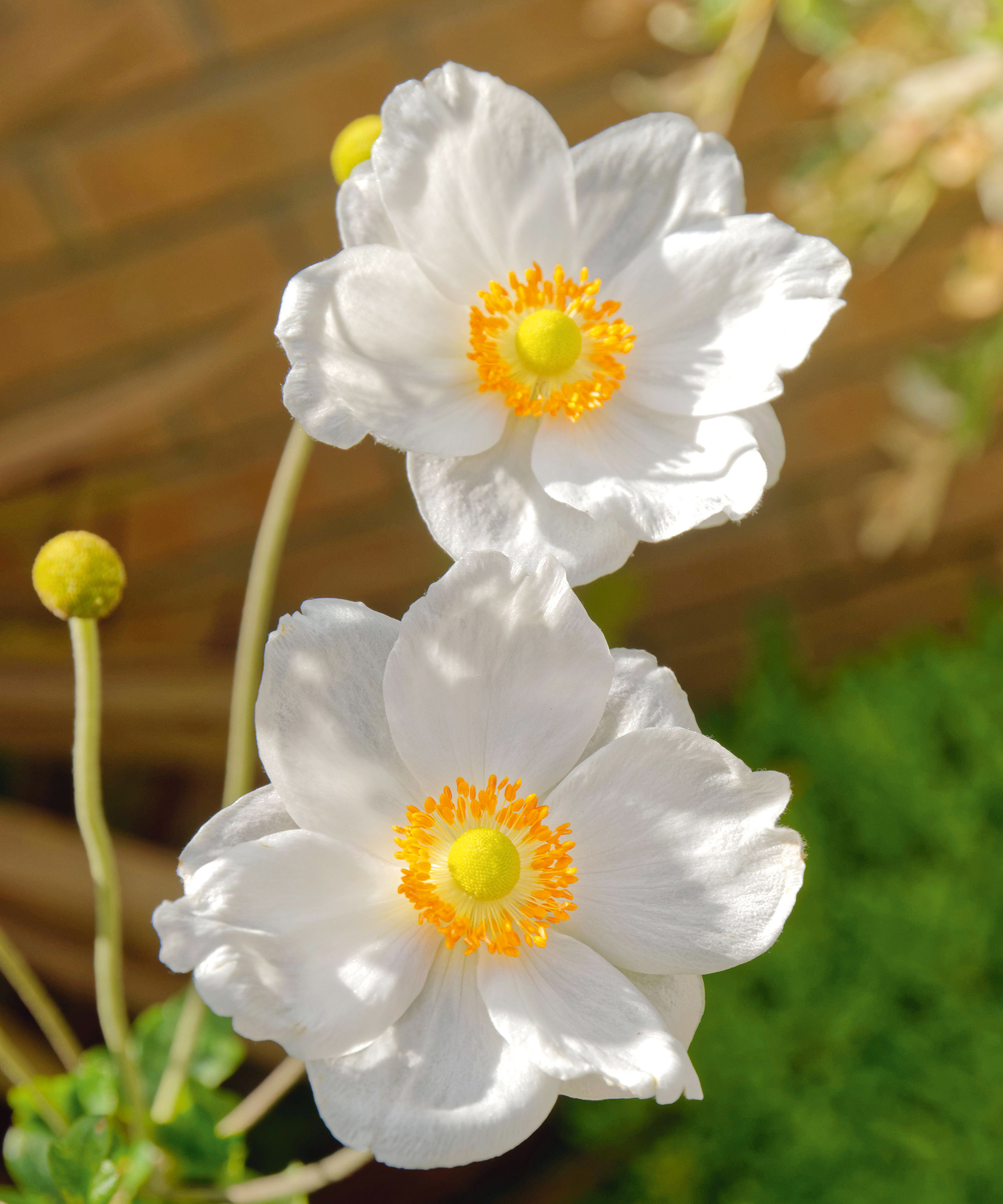
Japanese anemones are a pretty option for the best plants for fence line. They are tall and non-floppy with upright flowers which seem to float above the foliage. They add a splash of late summer/early autumn color and pleasing structure to the fence line.
Try ‘Königin Charlotte’ for frilly, pink double flowers on 5ft (1.5m) stems, or ‘Honorine Jobert’ for single white cup-shaped blooms.
These plants thrive in partial shade and dry soil, so if your fence has a rain shadow, it won’t cause a problem. Deadhead, and then cut back the plants after they finish flowering. Japanese anemones do spread, so divide every couple of years to keep them under control.
Looking for more shade loving plants? There's plenty of suggestions in our guide.
How to grow climbers against a fence line
For best results, follows these expert tips from Shannen Godwin from J.Parkers:
- Plant the climber around 12-18in (30-45cm) from the base of the fence. This will allow enough room for root development.
- Use scissors to cut off any ties that hold the climber to its bamboo support cane.
- Select three bamboo canes to train the climber at an angle up to wire supports on the fence. Place the bamboo canes under the wires to hold them in place, adjusting the positioning to create a fan shape.
- Fix the supports.
- Tie in the main shoot vertically to the wires, then fan out the side branches and tie in too.
- Once the plant is secured to the training structure, give your climber an initial prune and remove any weak growth with secateurs.
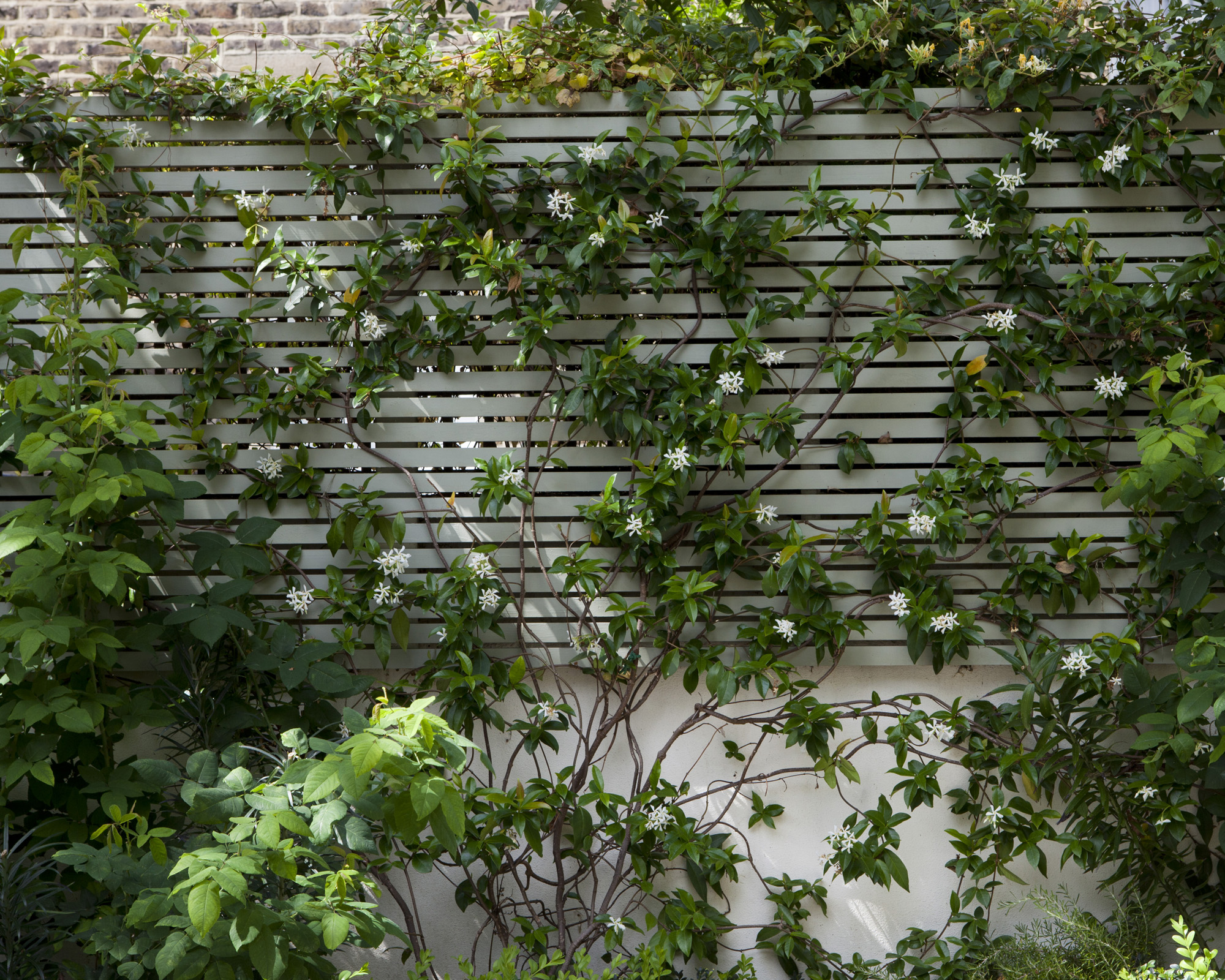
Can you grow climbing plants against a fence without trellis?
Trellis ideas for gardens are a good way to help climbing plants grow as they need something to hold on to, however, they aren't always essential.
You can grow climbing plants on a solid fence or garden wall, for example, if you add some horizontal wires attached to screw-in vine eyes for them to cling to. Vine eyes are available in hardware and DIY stores.
Can you grow trees along a fence line?
Although the best trees for small gardens are a good option for growing in a confined space, there are certain trees which are particularly suitable for growing along a fence line. Italian pencil pines (cupressus sempervirens) are slim enough for the narrowest space, can be grown in a pot or in the ground, and they create a classic, elegant look so can be a good option for the best plants for fence line.
Pleached trees are a way of landscaping along the fence, creating extra height. According to the RHS pleaching means 'a method of training trees to produce a narrow screen or hedge by tying in and interlocking flexible young shoots along a supporting framework.'
Pleached trees can be bought ready-shaped from specialist nurseries and garden centers. Pleached espalier trees have a tiered effect, with a straight stem about 6.5ft (2m) above ground level. Apples, apricots and pears can be grown in this way, achieving a productive and pretty fence line.


An experienced freelance journalist, editor and columnist writing for national magazines and websites, Fiona now specialises in gardens. She enjoys finding and writing about all kinds, from the tiniest town plots to impressively designed ones in grand country houses.
